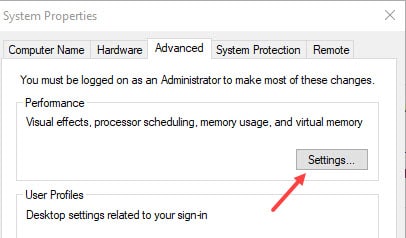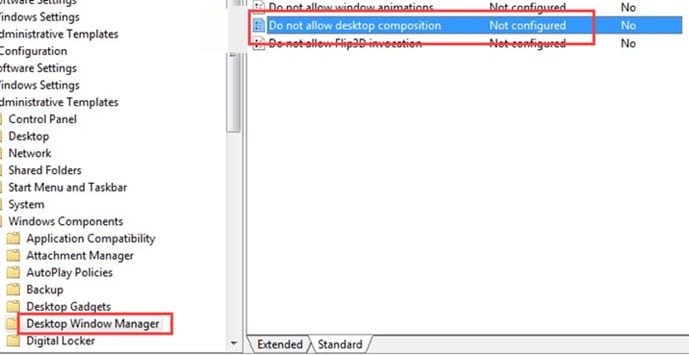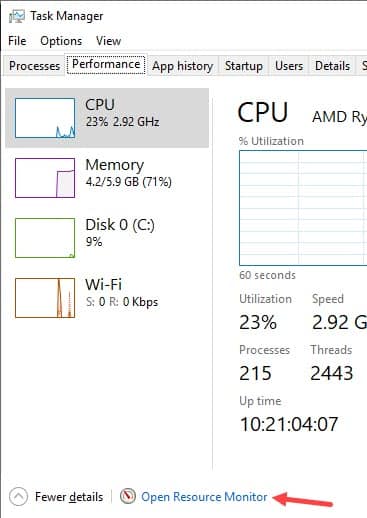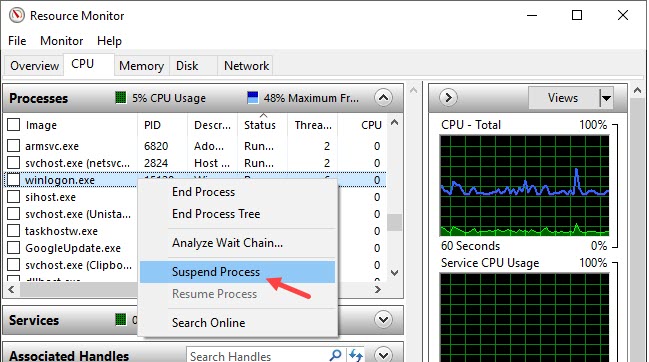What is Desktop composition you ask? Well, Desktop composition is a visual experience feature, which was first introduced in Vista. This feature has completely changed the way pixels are displayed on the screen by the different applications. In this article we will discuss what desktop composition is and how to enable or disable them.
Also, check out this article on how to calibrate laptop screen on Windows 10.
What Is Desktop Composition?
Contents
So what is desktop composition, and what it means to have it enabled? Having the desktop composition enabled means that individual windows will not draw to the primary display directly as it was used to happen in earlier Windows.
The drawing of the screen is actually redirected to the off-screen surfaces in video memory. This drawing is then rendered as a desktop image and presented for us on the display.
The Desktop Window Manager (DWM) is the service behind the Desktop composition. This DWM service then enables the visual effects and the features like the Aero theme on the desktop using the Desktop composition.
How To Enable Desktop Composition?
There are a few ways you can enable the Desktop Composition in Windows 7 and Vista, which are given below. Read them carefully and you will know how to enable desktop composition.
Method 1: Enable Through The Visual Effects Settings
The first method is to enable from the Visual effects settings. Follow the steps given below to do it:
- Right-click on This PC and select the Properties option from the pop-up menu.
- Select the Advanced system settings option. System Properties app will open on your screen.
- Click on the Advanced tab and select the Settings option in the Performance section.

- Now in the Visual Effects tab, locate and check the Enable desktop composition box.
Similarly, disable desktop composition by unchecking that box.
Method 2: Enable From Services
The second method to enable it is through the Services. Follow the steps given below to do it:
- Type services.msc in the Windows search bar and select the top option to open the Services app on your screen.
- Locate the Desktop Window Manager Session Manager service and double-click on it.
- In the General tab, click on the drop-down menu beside the Startup Type and select the Automatic
- Then, click on the Start option and finally click on Apply and OK to save the changes.
Changing the Startup type to Disable will disable it.
Method 3: Enable Through Registry Editor
In the 3rd method, you will have to manually enable it through the Registry Editor. To do it, follow the steps given below:
- Type regedit in the Windows search bar and select the appropriate option.
- Navigate to the location given below:
HKEY_CURRENT_USER\Software\Microsoft\Windows\DWM - Now, double-click on the CompositionPolicy DWORD in the right pane.

- Enter 0 in the Value Data section and click on OK.
- Finally, close the Registry Editor and restart your computer.
Enter the value 1 if you want to disable it.
Method 4: Enable From The Local Group Policy Editor
In the 4th method, you will have to use the Local Group Policy Editor. To do it, follow the steps given below:
- Type gpedit.msc in the Windows search bar and select the appropriate option.

- In the left panel, first expand the User configuration option, next expand the Administrative Templates option and then expand the Windows Components.
- Now, click on the Desktop Window Manager in the left pane.
- Right-click on the Do not allow desktop composition option in the right pane and click on the Edit option from the pop-up menu.

- Select the Not Configured or Disabled option to enable Desktop composition.
- Finally, click on Apply and OK to save the changes.
Restart the computer and the desktop composition will be enabled. To disable it, select the enabled option.
How To Disable Desktop Composition In Windows 10?
The most asked questions online about Desktop composition is if it can be disabled in Windows 10. Well, there is no setting that you can use to disable Desktop Composition in Windows 10. Neither one can disable the DWM from the methods that work in Windows 7 and Vista.
From Windows 8, Microsoft has removed the ability to disable desktop composition. However, there is a way you can force close it, although we don’t recommend you trying it as many mishaps can occur trying to disable a Windows service that isn’t supposed to be disabled in Windows 10.
Steps To Disable Desktop Composition
To disable Desktop Composition in Windows 10, follow the steps given below:
- Press the Ctrl + Shift + Esc keys to open the Task Manager on your screen.
- In the Performance tab, select click on the Open Resource Monitor option.
Resource Monitor will now open on your screen.

- In the CPU section, locate the winlogon.exe and right-click on it.
- Select the Suspend process option and immediately click on the Monitoring tab and then select the Stop monitoring option. If you don’t do it quickly, then winlogon.exe can disappear and you will have to restart to get it back.

- Now, open the Task Manager again and locate the Windows Explorer in the Processes tab.
- Right-click on it and click on the End task option.

- Similarly, End task Application Frame Host, Search, Shell Experience Host, and all the other modern apps or UWP.
Note: If you don’t end the modern apps, then you will have a black screen once you end DWM later. So, you will have to blindly resume winlogon.exe, which is not an option, or restart your computer.

- Now, locate the Desktop Window Manager (DWM) in the Processes tab and also End task it.

- Next, select the File option in Task Manager and click on the Run new task option.
- Type explorer.exe and press Enter.

Now, if you want the DWM back, then you will just have to resume the winlogon.exe from the Resource monitor.
This method of disabling the Desktop composition in Windows 10 may or may not work for you. However, this method did work for us.
Wrapping Up
So, now you have the answer to “What is Desktop composition?” and also how you can enable/disable it in Windows 7 and Vista and also how to disable desktop composition in Windows 10. Follow the above steps very carefully, and we again recommend you not to try disabling the desktop composition in Windows 10. Leave your comments below in the comment section sharing your views on this article.
I still don’t get what “desktop composition” means for the visual experience of the user, and if it takes more or less computer resources etc.